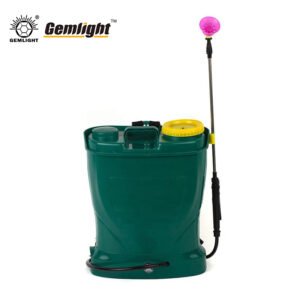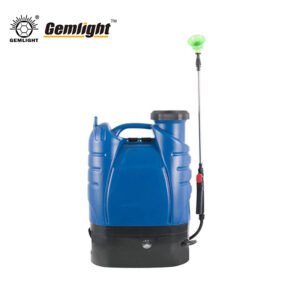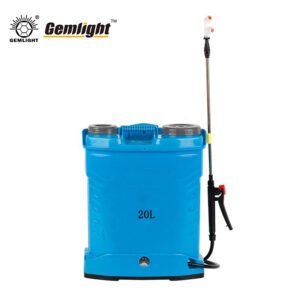Planting trees may seem simple, but using the right tree planting shovel makes all the difference in efficiency, comfort, and survival rate of young trees. Whether U manage a forestry project, landscaping business, or agricultural plantation, selecting a durable, ergonomic shovel ensures consistent performance and reduces labor fatigue.
This guide helps U understand everything about tree planting shovels—from types and materials to professional tips and global B2B trends.
1. What Is a Tree Planting Shovel?
A tree planting shovel is a specialized digging tool designed for making deep, narrow holes suitable for saplings, seedlings, or transplants. Compared with standard shovels, it offers a sharper blade, stronger steel, and an optimized handle for repetitive use.
It’s commonly used in:
-
Forestry and reforestation projects
-
Urban landscaping and gardening
-
Agricultural planting of fruit trees or shrubs
-
Large-scale environmental restoration
2. Structure and Materials
A professional-grade tree planting shovel combines strong materials and ergonomic design. Its main parts include:
Blade
Usually made from high-carbon steel or manganese steel, the blade offers excellent strength and edge retention. The pointed shape ensures easy soil penetration, even in rocky or clay conditions.
Handle
Handles come in wooden, fiberglass, or steel versions:
-
Wooden handles (such as ash or hickory) provide a traditional feel with good shock absorption.
-
Fiberglass handles are lightweight, resistant to weather and rot.
-
Steel handles deliver maximum strength for industrial use.
Grip
Rubber or PVC grips improve hand comfort, preventing blisters during long work sessions. Some modern designs include anti-slip patterns for better control.
3. Main Types of Tree Planting Shovels
Choosing the right type depends on soil conditions, tree size, and working environment.
(1) Straight Blade Shovel
A narrow, pointed blade ideal for planting seedlings in soft or loamy soil. Common in forestry operations for quick planting lines.
(2) Curved Blade Shovel
Designed for heavy or compact soil, its curved profile increases leverage, reducing the force needed to dig.
(3) Serrated Edge Shovel
Perfect for cutting through roots, sod, or tough ground layers. Serrated blades combine digging and cutting functions in one tool.
(4) Long-Handled Planting Shovel
Provides extra leverage, allowing workers to dig deeper with less bending. Excellent for reforestation and plantation sites.
(5) Short-Handled Planting Shovel
Compact and lightweight, suitable for tight spaces or individual planting tasks in gardens or urban projects.
4. Why Material Quality Matters
In industrial and agricultural settings, durability is key. A tree planting shovel made from high-carbon steel can last for years, even under extreme use. Inferior materials may bend, crack, or lose sharpness quickly, increasing costs over time.
Manufacturers like Gemlight Tools from China produce plantation-grade shovels with:
-
Hardened and tempered steel blades
-
Polished surface for rust resistance
-
Customizable handle types for OEM or ODM clients
These specifications ensure reliable performance for distributors serving forestry and agricultural markets in Africa, South America, and Southeast Asia.
5. Ergonomics and Worker Efficiency
Comfort equals productivity. An ergonomic tree planting shovel reduces strain on the back and shoulders, allowing longer working hours without injury.
Look for features such as:
-
Balanced weight distribution
-
Cushioned handles
-
Proper handle length based on worker height
-
Blade angles that reduce soil sticking
Efficient planting crews can increase daily output by 15–25% simply by switching to ergonomic shovel designs.
6. Choosing the Right Tree Planting Shovel for Your Business
For B2B buyers, selecting a supplier that offers customization and volume pricing is crucial. Here’s what to consider:
| Factor | Recommendation |
|---|---|
| Material | High-carbon or manganese steel for heavy-duty use |
| Handle Type | Wood for traditional markets, fiberglass for modern users |
| Blade Width | 8–12 cm for seedlings, 15–20 cm for larger trees |
| Surface Treatment | Polished, painted, or powder-coated to prevent corrosion |
| Packaging | Bulk carton or wooden crate for export shipments |
Distributors should also check quality consistency, OEM branding options, and delivery time—critical for seasonal planting schedules.
7. Tree Planting Tips for Maximum Survival Rate
Even with a perfect shovel, technique matters.
-
Dig holes twice the width of the root ball.
-
Avoid glazing the hole walls; this helps roots expand freely.
-
Water immediately after planting to eliminate air pockets.
-
In compacted soil, loosen the bottom layer with the shovel before placing the tree.
8. Global Market Demand
With rising global attention to carbon neutrality and reforestation, demand for tree planting tools has grown rapidly. Government forestry programs and private green projects are purchasing in bulk.
B2B distributors in Africa and Latin America often prefer simple, durable models with wooden handles, while Southeast Asian buyers favor painted or coated finishes to handle humidity.
As sustainability drives industrial projects, tree planting shovels will continue to gain importance in tool distribution markets.
9. How to Maintain Your Tree Planting Shovel
Proper care extends product life:
-
Clean soil and sap after each use.
-
Apply oil on the blade to prevent rust.
-
Store indoors or under cover.
-
Check handle tightness regularly.
A well-maintained shovel not only lasts longer but also ensures safety and consistent performance.
10. Why Choose Professional Manufacturers
Partnering with a dedicated manufacturer brings stability and trust. Factories like Gemlight Tools provide:
-
ISO-certified production lines
-
Strict heat treatment and hardness testing
-
Custom blade shape and handle design
-
Private label and bulk order services
For distributors, this means faster delivery, stable quality, and better profit margins.
Conclusion
The tree planting shovel is more than just a simple tool—it’s the foundation of every successful reforestation or landscaping project. From material selection to ergonomic design, each feature affects efficiency and longevity.
For B2B buyers, choosing a trusted manufacturer ensures steady supply, customization options, and reliability your clients can count on. With the right shovel, every tree you plant grows stronger—and so does your business.
Related products




